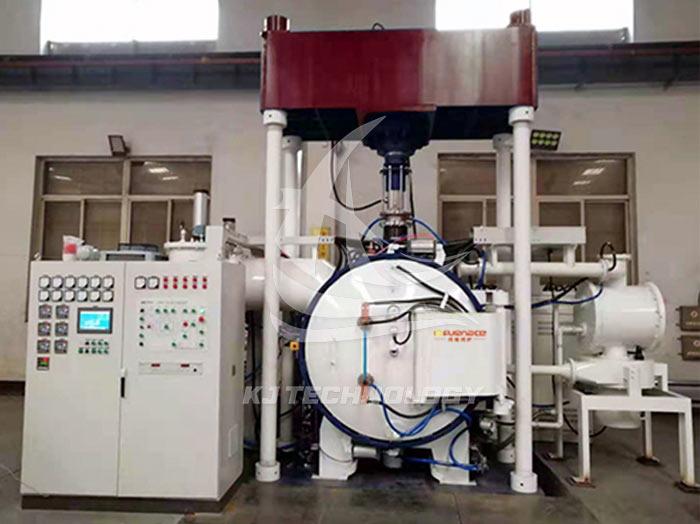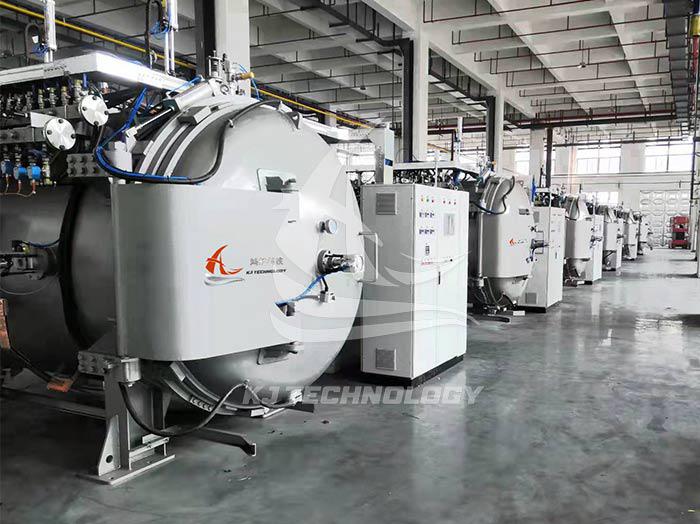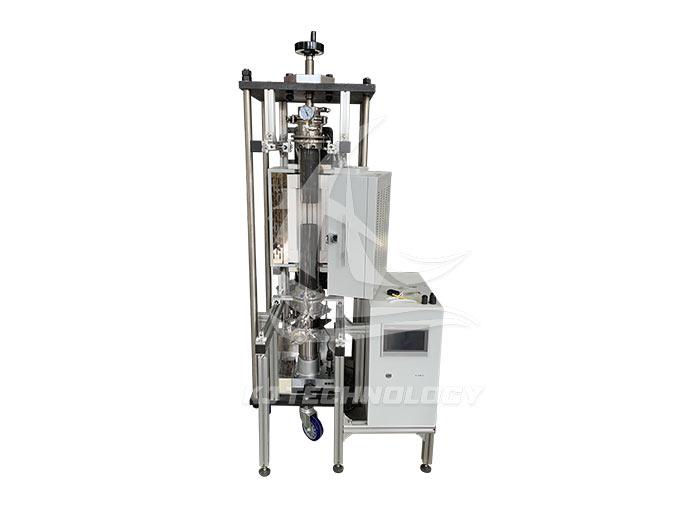Can a laboratory powder sintering furnace sinter composite materials?
 08-08-2025 Author: KJ technology
08-08-2025 Author: KJ technology
The laboratory powder sintering furnace can be fully used for sintering composite materials and has significant advantages in the research and development of composite materials and small-scale preparation. The following is a detailed explanation:
1. The principle of sintering composite materials in laboratory powder sintering furnace
Composite materials are composed of two or more materials with different properties that are combined through physical or chemical methods. During the sintering process, it is necessary to achieve interface bonding and performance synergy between the components. The laboratory powder sintering furnace promotes the sintering of composite materials through the following methods:
Interface diffusion: At high temperatures, surface atoms of different component particles form metallurgical or chemical bonds through diffusion, enhancing interface strength.
Densification: Through particle rearrangement, neck growth, and pore closure, internal defects in the material are eliminated to improve density and mechanical properties.
Reaction sintering: During the sintering process, chemical reactions between components are triggered (such as the reaction between silicon carbide and metallic silicon to form silicon carbide ceramics), forming new or reinforcing phases.
2. Advantages of sintering composite materials in laboratory powder sintering furnace
Process flexibility:
Adjustable temperature, atmosphere, pressure and other parameters to adapt to different composite systems such as metal ceramic, ceramic ceramic, ceramic polymer, etc.
Support various processes such as atmospheric pressure sintering, hot pressing sintering, and spark plasma sintering (SPS) to meet diverse needs.
Small batch experimental capability:
Suitable for small-scale trial production in the research and development stage, quickly verifying the feasibility of material formulas and processes, and reducing research and development costs.
Standard samples can be prepared for performance testing (such as tensile, bending, hardness, etc.) to accelerate material optimization.
High precision control:
Equipped with a high-precision temperature control system (such as ± 1 ℃) to ensure the stability of sintering temperature and avoid component over burning or under burning.
The atmosphere control system can accurately adjust the gas flow rate and purity to prevent oxidation or promote specific reactions.
Multifunctionality:
Partial sintering furnaces are integrated with pressure loading devices, which can achieve hot pressing sintering and improve the density of composite materials.
Supports vacuum environment and is suitable for composite materials that are sensitive to oxidation, such as metal based ceramic composites.
3. Types of composite materials that can be sintered in laboratory powder sintering furnaces
Metal ceramic composite materials:
Typical materials: TiC Ni based metal ceramics, WC Co hard alloys, Al ₂ O ∝ - TiC ceramic cutting tool materials.
Application: Cutting tools, molds, wear-resistant parts, etc.
Sintering process: atmospheric pressure sintering or hot pressing sintering, with a temperature usually between 1300-1500 ℃, and carbon content needs to be controlled to prevent decarburization.
Ceramic ceramic composite materials:
Typical materials: Al ₂ O ∝ - ZrO2 ₂ layered composite material, Si ∝ N ₄ - SiC nanocomposite ceramic.
Applications: High temperature structural components, biomedical materials, electronic packaging, etc.
Sintering process: pressureless sintering or hot isostatic pressing (HIP), with a temperature range of 1600-1900 ℃, and the composition ratio needs to be optimized to control grain growth.
Ceramic polymer composite materials:
Typical materials: Al ₂ O ∝ - polyimide (PI) composite material, SiC epoxy resin composite material.
Applications: Aerospace thermal protection materials, electronic circuit substrates, etc.
Sintering process: two-step method (sintering ceramic skeleton first, then impregnating polymer), the sintering temperature needs to be controlled to avoid polymer decomposition.
Metal metal composite materials:
Typical materials: copper graphite composite material, aluminum silicon carbide (Al SiC) electronic packaging material.
Application: Conductive and heat-conducting materials, lightweight structural components, etc.
Sintering process: Liquid phase sintering (such as copper based composite materials), with a temperature of 800-1000 ℃, and the amount of liquid phase needs to be controlled to prevent deformation.
4. Application scenarios of sintering composite materials in laboratory powder sintering furnace
Research and development:
Validate the formulation design of new composite materials, such as component ratios and particle size matching.
Study the influence of sintering process on interface structure, density, and properties.
Material characterization:
Prepare standard samples for microstructure analysis (SEM, TEM) and mechanical property testing (tensile, bending, fracture toughness).
Evaluate the special properties of composite materials such as thermal conductivity, electrical conductivity, and wear resistance.
Small batch production:
Meet the demand for customized composite materials in university laboratories or enterprise R&D departments.
Provide process parameter basis for pilot scale testing and shorten the research and development cycle.
Teaching demonstration:
Used for practical teaching of composite material preparation technology in materials science courses.
Showcase the micro mechanisms of component diffusion and interface bonding during the sintering process.
5. Precautions
Component compatibility:
Ensure that each component does not undergo violent chemical reactions at sintering temperature (such as excessive reaction between metal and ceramic leading to performance degradation).
Verify the matching of thermal expansion coefficients between components through pre experiments to avoid cracking after sintering.
Interface optimization:
Adding a small amount of active elements (such as Y ₂ O ∝, La ₂ O ∝) promotes interfacial bonding and improves the strength of composite materials.
Control the sintering atmosphere to prevent interface oxidation or contamination.
Process control:
Strictly monitor the sintering temperature curve to avoid component segregation or abnormal grain growth caused by temperature fluctuations.
For hot pressing sintering, it is necessary to control the pressure loading rate and holding time to ensure uniform stress transmission.
Security protection:
For composite materials containing toxic components such as cobalt and lead, they need to be operated in a fume hood and equipped with exhaust gas treatment devices.
Wear protective gloves and face shields during high-temperature operations to prevent burns.








